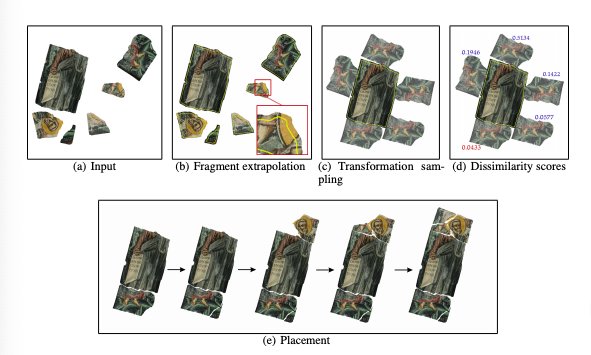The neural network brings together pieces of archaeological finds

A joint team of specialists from the Technion and the University of Haifa has developed a new technology that allows you to collect archaeological puzzles in automatic mode. We are talking about fragments of finds that can be difficult for a person to combine into a single whole. But the computer "understands" how to properly attach one piece to another to get the original pattern, picture or vessel.
The technology developers say that scientists have been looking for a solution to the “problem of archaeological puzzles” for many years. And besides archeology, the new technique is applicable in other branches of science, including archeography, biology, archeology.
Programmers have been developing puzzle collection systems (non-archaeological, ordinary) for many decades. The first program of this kind appeared in 1964, she was able to collect puzzles from 9 elements. Modern technologies cope with thousands of fragments. They are gathered together, finding similar in color or image on the surface areas.
Israeli scientists decided to try to take the old (relatively) technology and apply it to solve new problems. One of them, as mentioned above - the connection of separate fragments of archaeological artifacts. This may be a mosaic, earthen vessel, other elements. Actually, most of the archaeological finds are stored in the form in which they were found - separate sections of something larger. When a human scientist is taken to work on the connection of elements, it takes from several days to several years to complete the task.
The problem is that it is not always clear which fragment is part of what. The computer copes with this task much more briskly. A neural network trained in a special way can add elements in the order it should be.

“We chose archeology not only because it is the cultural heritage of the centuries, but also because not so many technological innovations are being applied in archeology now,” said one of the developers. “In most cases, archaeological artifacts are not“ clean ”, most often they are broken, eroded, and polluted. Extremely modern algorithms are needed in order to restore the original appearance of the finds. That is why archeology is a challenge for information technology professionals.
In order to make their method reliable, scientists have trained the neural network to distinguish three types of problematic finds - destroyed, faded, and eroded. The problem most often is that even if fragments of something that had previously been a single whole are in the ground together, they are extremely difficult to fold, because the edges of the elements are affected by erosion. And it is not always clear which element should be located.
In addition, the fading of finds also constitutes a known problem, since it also complicates the work of restoring the find. If there are no bright colors, it is not always clear which fragment to follow. In the usual puzzles, albeit complex, always a certain number of fragments. In the "archaeological puzzles" fragments may not be enough, some of them loosely adjoin each other because of the destroyed edges, as mentioned above. Therefore, it is difficult for a person or a machine to collate elements and put them together.

"We propose a new algorithm that can cope with all these difficulties," writes the researcher. "The technology is based on different ideas. First, we propose to virtually restore each of the fragments found. This eliminates the problem of broken edges. Second, we We use the method of inverse probability of the composite transformation. ”
The algorithm, developed by the scientists, is the following question:“ How can the puzzle be best put together? ”In this case, the archeological puzzle is meant. There are some criteria for evaluating each of the fragments, including the distance between the elements, the coincidence of colors, the similarity of the outlines of the edges, the size of the fragments, the combination of drawing elements, etc.
To test the work of the neural network, scientists restored parts of the frescoes from various churches around the world. As it turned out, the algorithm really copes with its task, it can put together the broken objects and disparate elements of frescoes and mosaics.
